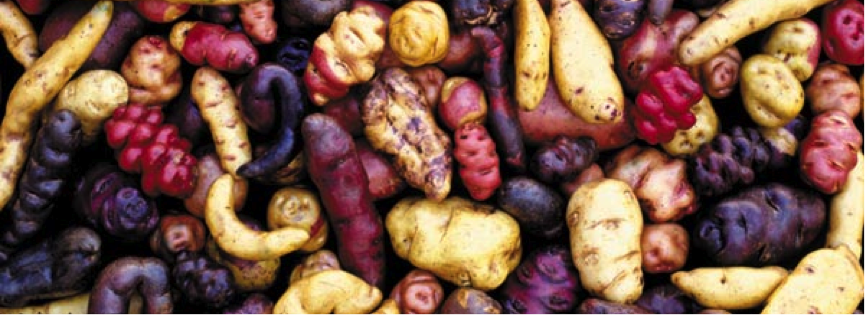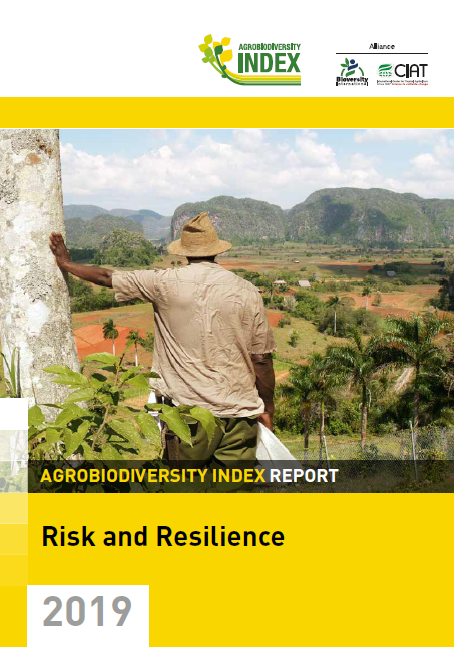Measuring the diversity of a food supply gets tricky fast.
Do we measure the diversity of the farms products come from? How is that done? There are ways of measuring land cover with satellites, but that doesn't say a huge amount about the species or varieties on a farm. So that means doing surveys of farms. Then you have to wonder if the farmers call the same varieties by the same names, and if what's in the field is what they grow year-round - some fields have crop rotations within the same year, and cover crops in the off season. Is the farming style of the region changing? Are there notable extension efforts in the area that are promoting polyculture or monoculture?
If you want to know about the diversity in a diet, that can get thornier still. A lot of measures of dietary diversity rely on 24-hour recalls, in which a person lists everything they ate the day before. There are a few problems with this: they may forget something they ate (having done this myself, it is very easy to 'blank' on a food), there's no easy way to show the amounts of what they ate, and the day that they describe may not be a typical day. These foods are often clumped into different 'functional groups,' which can change depending on who the survey is of and who it's for; but there are often groups of vitamin A-rich food, protein, carbohydrates, leafy vegetables, et cetera. If you want to talk about varieties in a diet, you have to rely on the consumer knowing what the varieties are called, which will often restrict you to farming families or to hunting down labels on packets.
On top of all of this, are they telling you what you want to hear, or what actually happens? Are they fudging the truth to maintain their dignity? (Imagine that a foreigner comes to your home and asks if you eat insects: if you live in a culture where eating bugs is a low-caste thing to do, you may not want to tell an outsider the truth.)

There is an astonishing amount of variation of measurements that are taken; one of the main gripes of meta-analyses is that studies are incredibly difficult to compare, making it really hard to make overall statements about agrobiodiversity and diet diversity.
Considering that this is what the next phase of my thesis is about, I'm in deep water. However, there are a number of examples that have been done successfully which look at agrobiodiversity, diet diversity, and system sustainability. For example, there's the Agrobiodiversity Index, which measures 'commitment,' 'action,' and 'status:' the political will, what is being done, and the current level of agrobiodiversity. These three categories are examined through the lenses of policy, species and varietal diversity, pollinator and soil biodiversity, landscape matrices, seed access, and others. Nutrition is included in the Index through functional diversity, both when it is mentioned in policy documents and in terms of "functional group richness of consumed foods," the number of functional groups the study participants are eating. It's not clear from the Methodology Report exactly how many functional groups there are, or if this varies between countries.
The Agrobiodiversity Index has been a massive undertaking which has spanned years of work; if you would like to see the results of the Index, it has analyzed ten countries worldwide for their levels of agrobiodiversity: Australia, China, Ethiopia, India, Italy, Kenya, Nigeria, Peru, South Africa, and the USA. Feel free to pick a couple of countries or to skim the whole thing; it's a fascinating read.
Of course, if you also want to measure other kinds of sustainability (water, greenhouse gas emissions,...), that can involve a whole other set of measures, picking and choosing what you need to know in order to be able to draw the type of conclusions you need. It's easy to see how different measures of similar things can become so different so fast, and it's easy to see why people would complain about how difficult it is to compare these approaches. I'm starting to see this kind of diversity as a necessary evil in order to adequately measure agrobiodiversity in each context.



